‘Spoke his truth’: Ralph Yarl testifies in hearing of man who shot him in KC Northland
Ralph Yarl faced the man accused of shooting him for the first time Thursday, the final witness in a preliminary hearing in a Clay County courtroom to determine if Andrew Lester will stand trial after the teen mistakenly went to the wrong house in a Kansas City Northland neighborhood earlier this year.
After evidence was presented and a dozen witnesses had testified, Judge Louis Angles ruled that prosecutors presented sufficient evidence to establish probable cause that Lester had committed a crime in the shooting of Yarl, who was 16 at the time.
Angles set Lester’s arraignment for 9 a.m. on Sept. 20.
The 84-year-old Lester, who is white, has been charged with first-degree assault and armed criminal action in the shooting of Yarl, who is Black, on April 13.
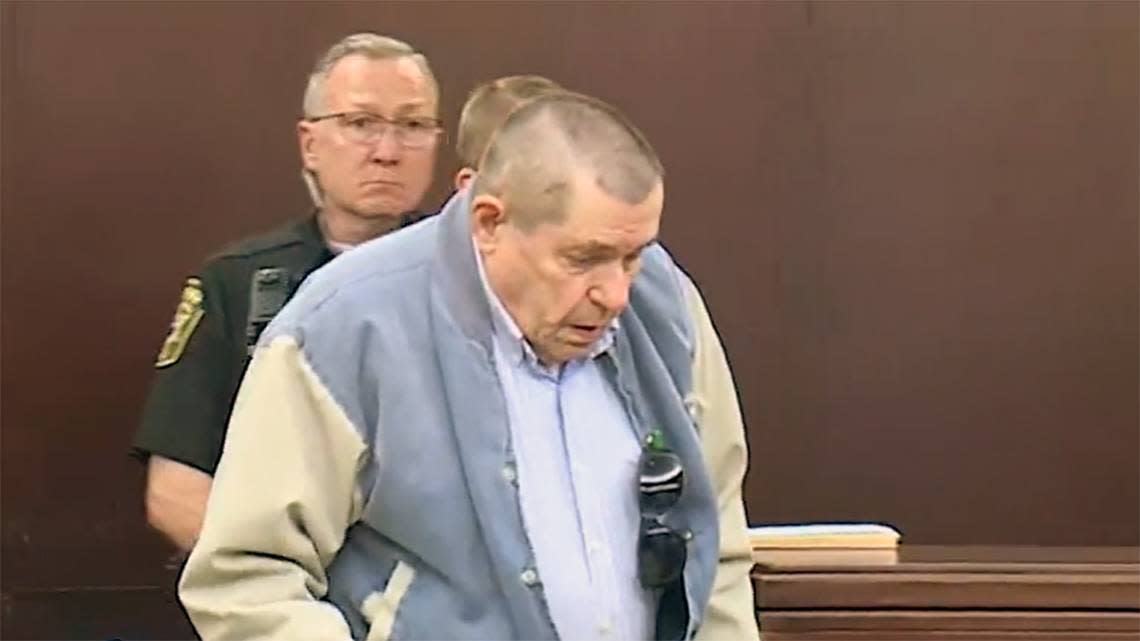
Shortly before 10 that night, Yarl rang Lester’s doorbell in the 1100 block of Northeast 115th Street, where he believed he was picking up his younger twin brothers up early from a sleepover. Yarl had intended to go to a home one street over, on 115th Terrace.
Yarl, when asked by the prosecutor how he is doing, said “I feel I have a great support system which is helping me recover and become my true self again.”
The teen recently started his senior year of high school and is planning college visits, where he hopes to study engineering.
His father, Paul Yarl, said he’s proud of how his son handled himself on the stand.
His aunt, Faith Spoonmore, said of Yarl’s testimony: “He spoke his truth.”
Lester’s attorney Stephen Salmon told media after the judge’s decision that the shooting was “a mutual mistake.”
He maintains Lester has a good chance of being acquitted at trial. In his closing remarks, Salmon said “under the (self-defense) law, Mr. Lester didn’t need to wait to be attacked by a stranger in the dark” to shoot.
Clay Clay Prosecutor Zachary Thompson said that Lester didn’t have the right to shoot a child through a closed door.
Lester “opened the interior door and within a few brief seconds opened fire on Ralph,” he said.
Activists, politicians and family of the teen have pointed to the case as one of “ringing a doorbell while Black.” It continues to spark conversations about racism, both explicit and implicit, and gun rights in the United States.
Civil rights attorneys hired by Yarl’s family have, along with others, called for Lester to be charged with a hate crime.
Lee Merritt, a civil rights attorney representing the Yarl family, previously said the teenager was shot “because he was armed with nothing other than his Black skin.”
Lester wasn’t charged until four days after the shooting.
Seated in the small courtroom Thursday were Yarl’s father, Spoonmore and other relatives.
Many wore blue shirts that read: “Ringing a doorbell is not a crime.”
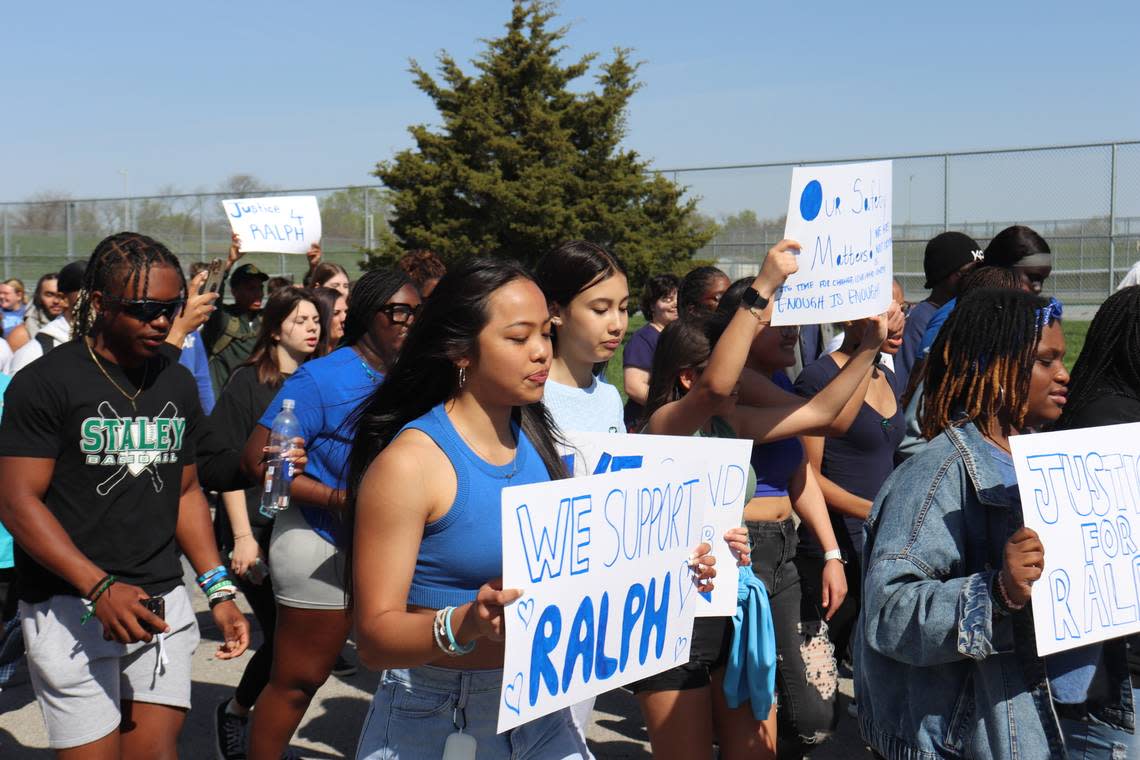
The shooting
Lester called 911 after he shot Yarl. His call came in at 9:52 p.m., a minute after a neighbor called.
“I just had somebody ring my damn doorbell ... he wasn’t in my house but I shot him,” he told the operator, describing the person as Black and 6 feet tall. Yarl is actually about two inches shorter.
“He was at my door trying to get in, and I shot him ... ” Lester said. “That’s all I remember.”
Larry Dunaway Jr. was one of the Kansas City police officers who responded to the shooting. He was directed to speak with Lester.
Lester told Dunaway that he heard a knock, saw a male on the porch and heard him “yanking” at the door handle. Lester said the person never said anything, so he didn’t know what the stranger wanted.
“To me he seemed like an elderly guy who was scared,” said Dunaway, who took the initial statement from Lester.
Officer James Gale, also with KCPD, took Lester to police headquarters to make a statement that night. Lester, who had difficulty walking due to a knee replacement, was not handcuffed for his safety, Gale said.
At police headquarters, Lester made a comment about hoping he didn’t kill anyone, Gale said.
In the initial interview, Det. Dennis Paquette testified that Lester told him he was worried about the size difference between himself and the person on his porch.
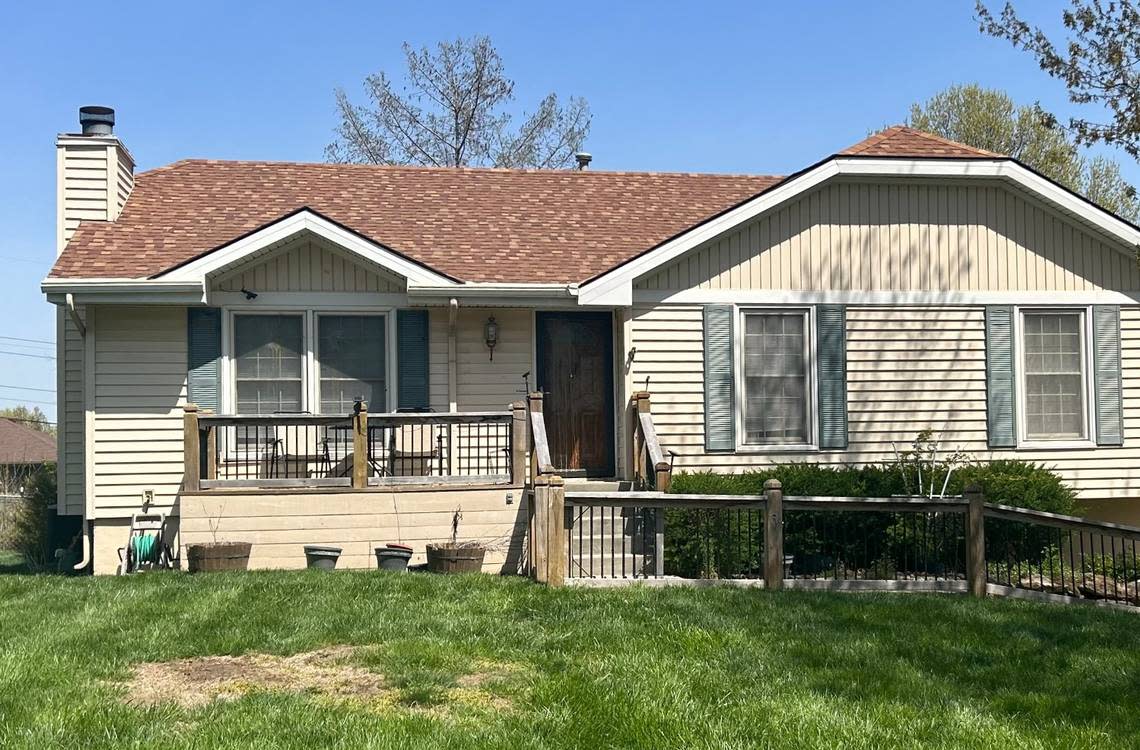
Yarl and his mother testify
Yarl’s mother, Cleo Nagbe, took the stand just before her son.
She told the court what she’s said in interviews since the shooting: She sent her son to pick up his younger twin brothers a couple blocks away. He didn’t have his phone because he left it at school. When he didn’t come home by 10, she began to worry.
She heard the sirens. The wailing of emergency vehicles wasn’t out of the ordinary. But the sheer amount of them was.
Still dressed in her pajamas, she got in the car and went to the house to pick the twins up. Yarl wasn’t there. Assuming her oldest son got a flat tire somewhere nearby, she drove around the neighborhood looking for him. That’s when she got a call from an unknown number. Yarl had been shot. Nagbe’s twins burst into tears.
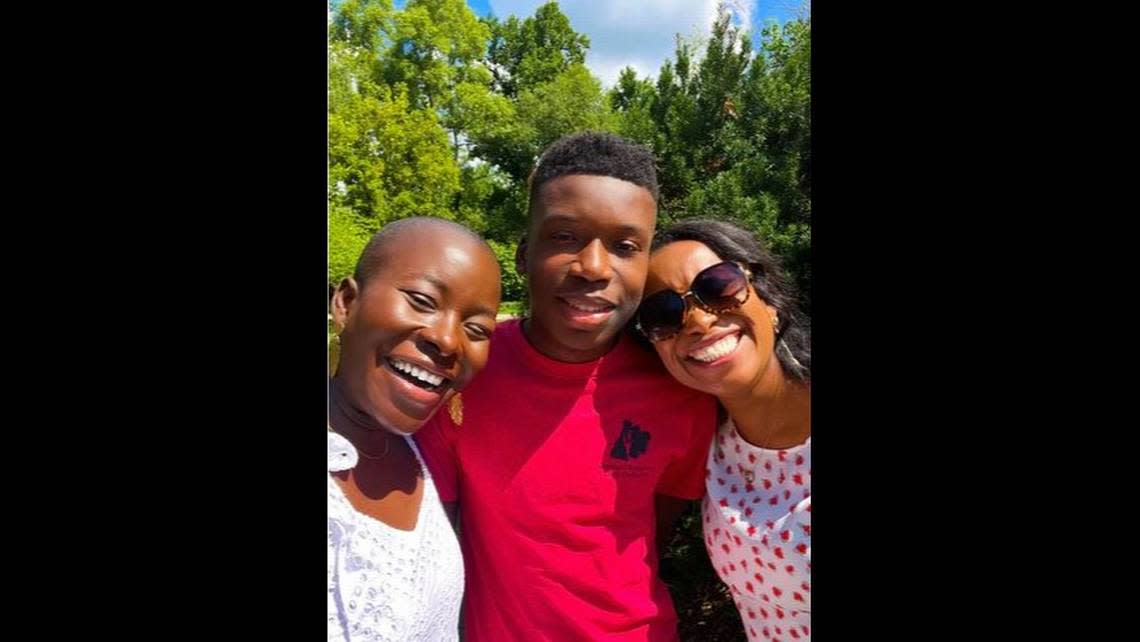
Yarl was the last person to testify Thursday. The teenager entered the courtroom in a collared, button-up shirt. Just a few months into his recovery, Yarl spoke quietly but confidently.
He told the judge that he didn’t have his phone, so he tried to commit the address to memory, relying on street signs during his short drive. He recalled pulling up to the front of the driveway, ringing the doorbell, and waiting “longer than normal” for someone to answer.
Yarl said he saw the main door open, so he started to pull at the storm door, assuming he’d be welcomed in.
Then he said Lester told him, “Don’t come here ever again” and held up a gun.
Yarl said he dropped his hand from the door and stepped backward. Then he said Lester shot him once in the head. Yarl said he fell to the ground, and then Lester shot him again in the arm.
Salmon in his questioning tried to pin some of the blame on Yarl, who maintained that he had no intentions of entering the home uninvited.
The defense attorney asked if he noticed the sign on the door that read “no solicitation.” Yarl said he hadn’t.
He asked if Yarl found it odd that there were surveillance devices. Yarl said no, because he’d seen many homes with security cameras.
Then the defense attorney asked Yarl if he knew it was unlawful to enter someone’s house without their permission. Yarl said he knew, but that he hadn’t planned to enter the house until he’d been greeted. He was just trying to open the storm door once the main door opened.
Salmon pointed out that Yarl did not speak to Lester in the brief moments between when he opened the door and when Lester shot Yarl.
“Do you understand how that can be interpreted as threatening?” Salmon asked Yarl.
Yarl’s response to the attorney was too quiet to make out.
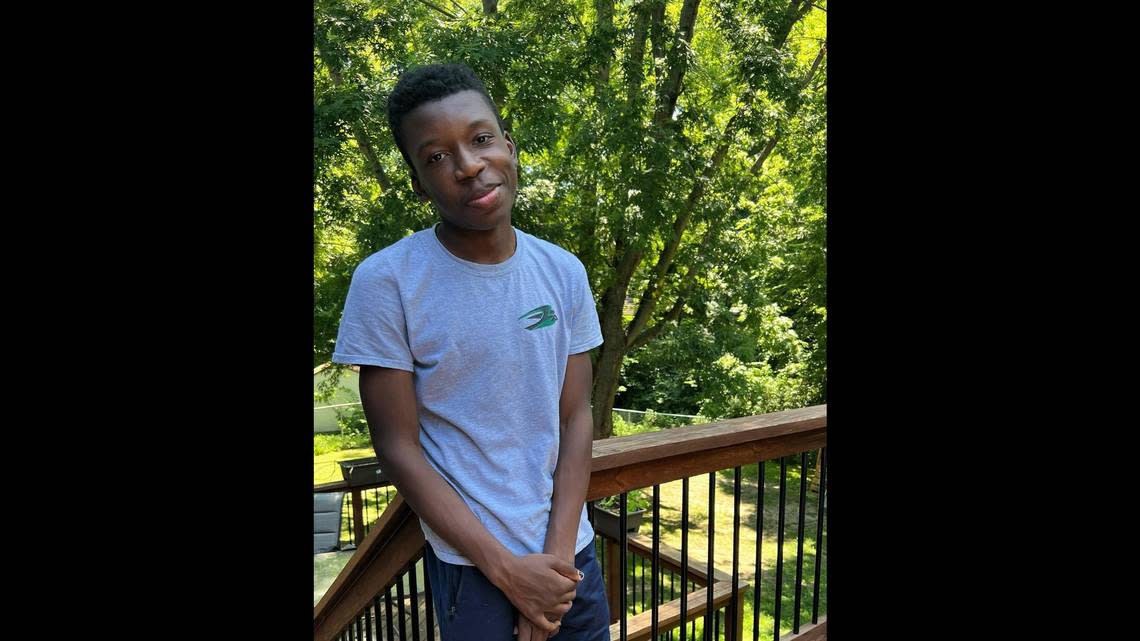
‘Please help’
When the shooting first started gaining publicity, Yarl’s family said that he had attempted to get help from neighbors in those first frantic moments, but was initially denied assistance.
Three of Lester’s neighbors testified Thursday morning, laying out a more complete picture of what happened when Yarl begged for help that night, and why neighbors didn’t at first open their doors.
During her testimony, Carol Conard noted she saw a car pull into Lester’s driveway about 9:30 that night.
It was “highly unusual for somebody to be pulling in the driveway that late at night,” she said.
She heard two bangs, then “someone screaming at the top of their lungs,” she said.
Her husband, Robert Conard, called 911 first, after he heard his wife yelling from the front of the house.
He ran to the front of the house and saw a person in the shadows off by the neighbor’s house yelling that he’d been shot, Conard said. He turned his porch light on as Yarl started coming his way.
“Get your ass back in the house and lock the door,” he testified that his wife yelled to him.
So Conard closed the door and heard Yarl pulling at the door handle. Conard said he was “startled,” but didn’t get out any of the guns that he owns.
“My concern at that point is we still didn’t know who else was involved,” Conard said.
Carol Conard testified that she told her husband to close the door because she was scared of what else was outside. She knew someone had been shot and feared for her safety. She eventually spoke with Yarl through the window, still not opening the door. She advised him to get in the street, where he was visible, sit down and stay calm, and that help was on the way.
After Yarl tried to get help at the Conards’ home, he went across the street to the home of Jodi Dovel. She didn’t hear the gunshots, but she heard the pounding at her door. Someone seemed to jiggle the door as they shouted for help.
Dovel said that, not knowing what was going on or if she was being robbed, she called 911.
In a recording of her 911 call that was played in court, Dovel was heard telling the operator that a Black male was on his knees outside her house near her mailbox pleading for someone to “please help.”
She told the operator that while she’s a healthcare professional, she was not going to go outside because she didn’t know what was happening and because it was dark.
“I don’t want you to go out there,” the operator responded. “Stay away from the windows and doors.”
Dovel hung up the phone and kept watching out the window. Once she saw other neighbors, including Conard, go out to the street to stand by Yarl, she also ran out. As she left her home, she noticed the trail of blood leading up her porch, on her railing, on her stairs and in a pool under Yarl’s head on the street.
When she got to Yarl’s side, he was alert. His two gunshot wounds were obvious, Dovel said.
She tried to keep him calm as he told her that he had been trying to pick up his brothers. She asked what school he went to as her son grabbed towels for her to press against Yarl’s head wound.
Police later said Lester shot Yarl with a 19th century Smith & Wesson revolver.
The emergency room physician at Liberty Hospital and the pediatric neurosurgeon at Children’s Mercy who tended to Yarl immediately after the shooting both testified that the shooting left a bullet fragment embedded into Yarl’s skull above his left eye, causing a depressed skull fracture.
The prosecutor asked Dr. Jo Ling Goh, at Children’s Mercy, if Yarl would forever have a divot in his skull to remind him of that night. Yes, she replied.
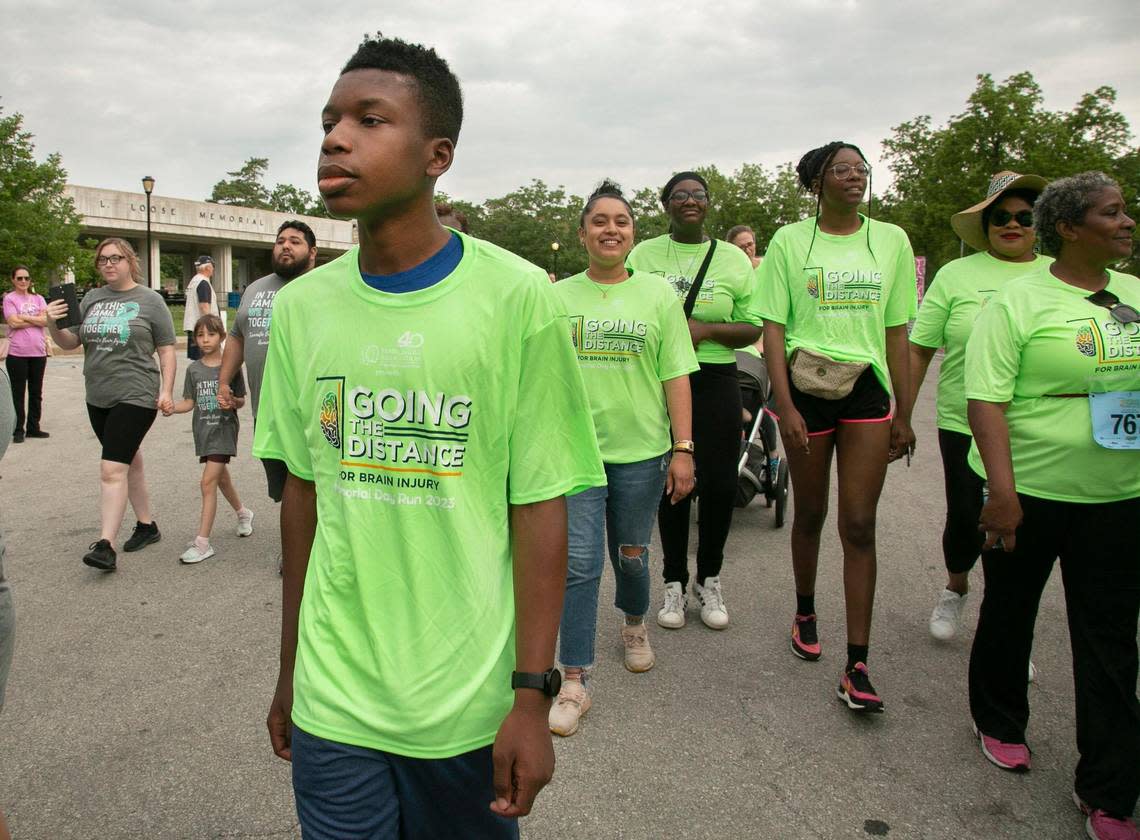
Who is Andrew Lester?
Lester is a Vietnam veteran, former airline mechanic, avid hunter and longtime gun owner.
The prosecution at one point displayed crime scene photos taken by Marena Draskovich, a forensic scientist with KCPD. They showed views from inside and outside Lester’s home, including images of the front door ajar and the glass blasted out of the center of the storm door.
The photos also showed Lester’s three-camera security system, which were pointed at the driveway, the walkway to the porch and the front porch. Another photo showed where the small screen was mounted on his bedroom wall — below a cross — displaying rotating images from his three cameras.
Ann Mallot, a forensic video analyst for KCPD, said she was not able to recover any recordings from the night Lester shot Yarl. She said the last recording was from nearly a year earlier.
His grandson Klint Ludwig told The Star in April that his grandfather had been immersed in “a 24-hour news cycle of fear and paranoia.”
Ludwig said he and Lester used to be very close.
“But in the last five or six years or so, I feel like we’ve lost touch,” he said. “I’ve gotten older and gained my own political views, and he’s become staunchly right-wing, further down the right-wing rabbit hole as far as doing the election-denying conspiracy stuff and COVID conspiracies and disinformation, fully buying into the Fox News, OAN kind of line. I feel like it’s really further radicalized him in a lot of ways.”
“And then the NRA pushing the ‘stand your ground’ stuff and that you have to defend your home,” he said. “When I heard what happened, I was appalled and shocked that it transpired, but I didn’t disbelieve that it was true. The second I heard it, I was like, ‘Yeah, I could see him doing that.’”
Two other relatives who previously spoke with The Star said they didn’t believe Lester was a racist and thought he likely was scared when he shot Yarl.
Daniel Ludwig, of Kansas City — who is Klint’s older brother — said he did not believe race played a role in the shooting.
“It’s just sad and I wish it didn’t happen,” Daniel Ludwig told The Star. “It seems like a bunch of mistakes in a row that resulted in a tragedy. I mean, a lot of mistakes all the way around, unfortunately.”
Lester’s nephew, Dean Smith, of Jewell Ridge, Virginia, said it would “be hard for me to believe” that Lester is racist.
“He’s worked with so many people,” he said. “He’s been a supervisor and all, over different races. He’s just a really straightforward, everyday person. He was just retired military, trying to get on with life.”

‘Stand Your Ground’ defense
In closing statements, Thompson, the prosecutor, maintained that no matter how threatened Lester may have felt, Missouri law is clear: He has the right to a firearm and he has the right to defend himself from criminals. But Thompson said Missouri law does not give Lester the right to shoot an unarmed child through a door.
Salmon in his closing statements said that from Lester’s perspective, he was unable to defend himself due to his age and physical condition.
“He had a split second to make a decision. ... He did what he thought was reasonable under the circumstances at the time,” Salmon said, saying that state statute allows people to defend themselves if someone is trying to make an unlawful entry into a dwelling.
“Mr. Yarl made the mistake of going to the wrong house and Mr. Lester, who believed there was an intruder coming in on him, he made a mistake too. It was a mutual mistake, is what this amounts to,” Salmon said.
Salmon said he didn’t know why Lester chose to open his door when the other neighbors did not. And why he brought a gun to the door while other neighbors did not.
“What was he supposed to do?” Salmon asked. “Wait another few seconds and have the guy on top of him? I think that’s what he was thinking.”
Thompson held a press conference following the decision but, unlike Salmon, declined to answer most questions, saying he wasn’t going to try the case in the media.
There was no mention of race as part of Thursday’s testimony. Thompson said there is no legal racial aspect in the case to discuss. Salmon said the case “is not a Black and white thing.”
When asked if she still believes there’s a racial component, Yarl’s aunt, Spoonmore, standing outside the courthouse, said in response: “Is it sunny outside?”
It was.
